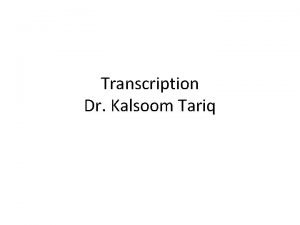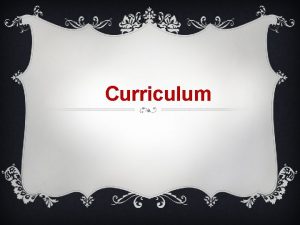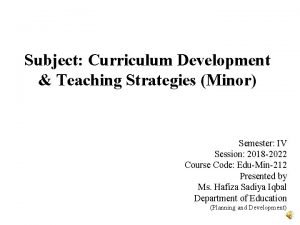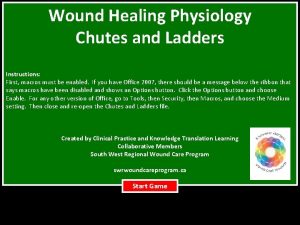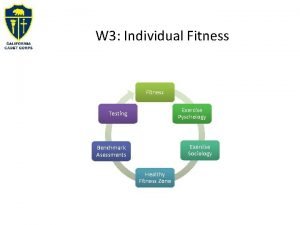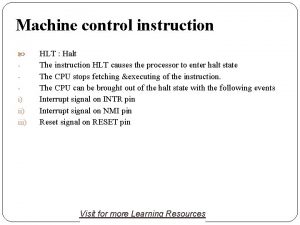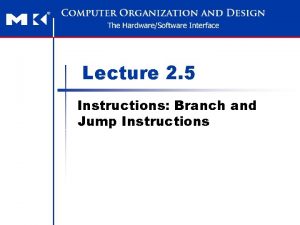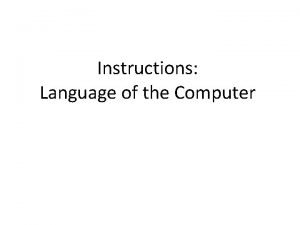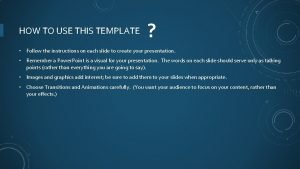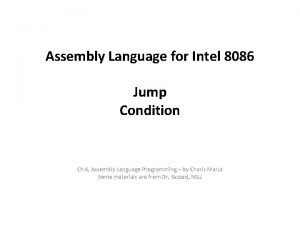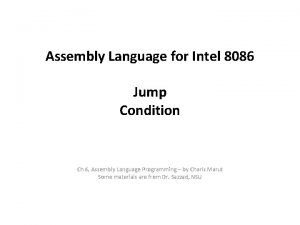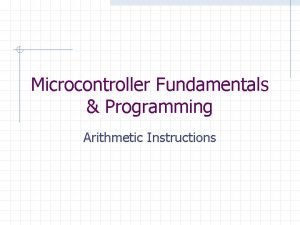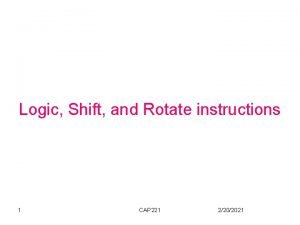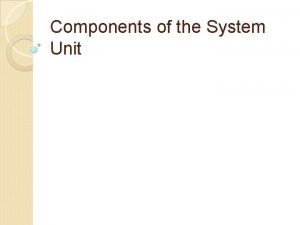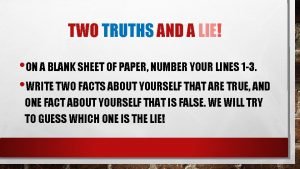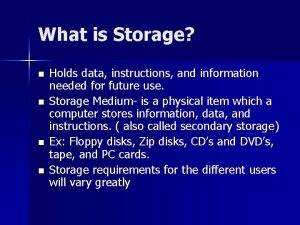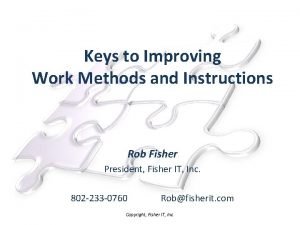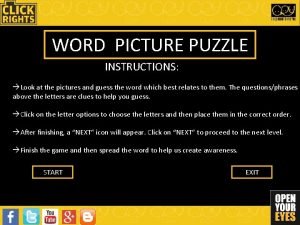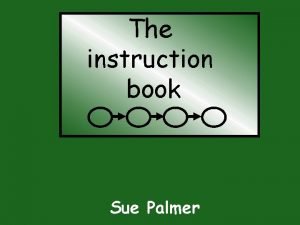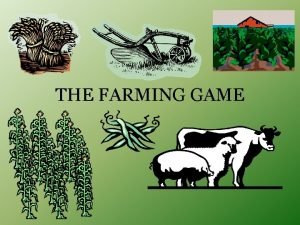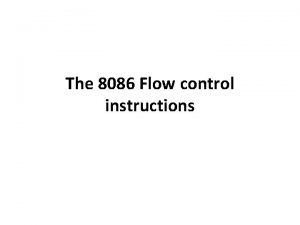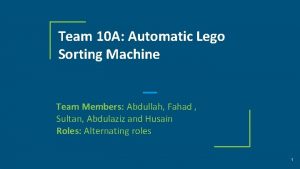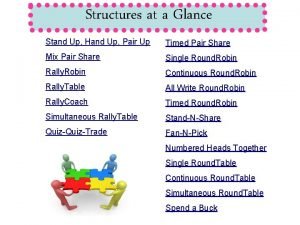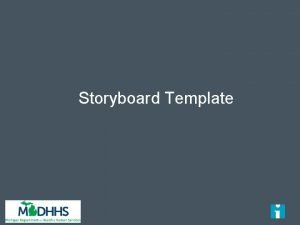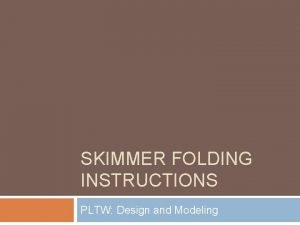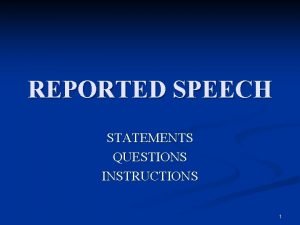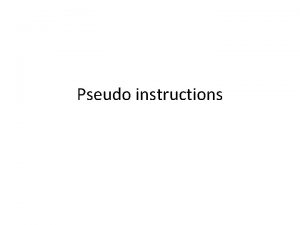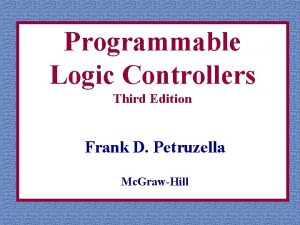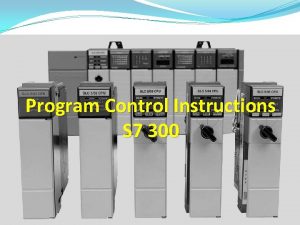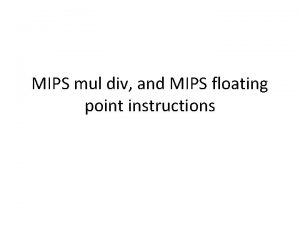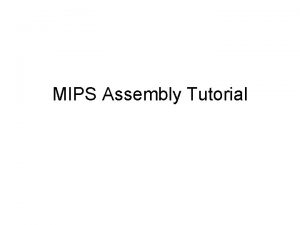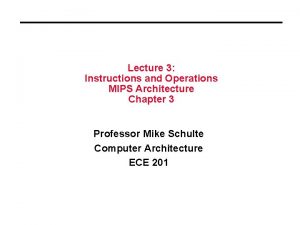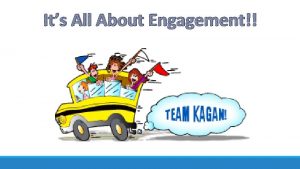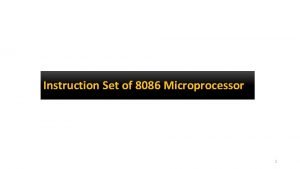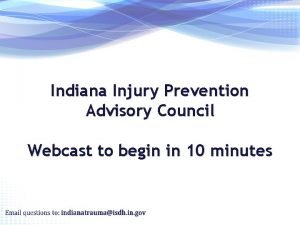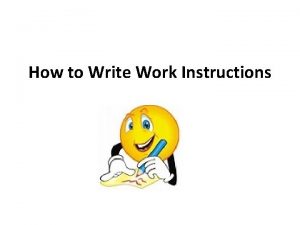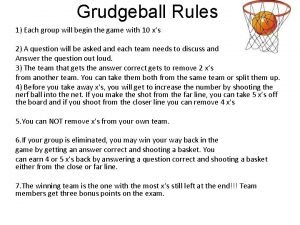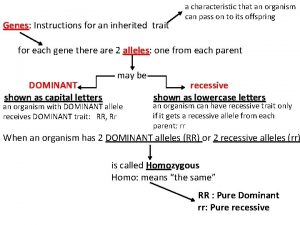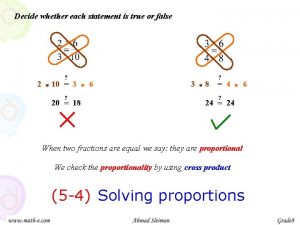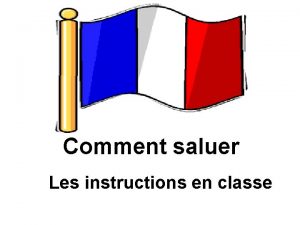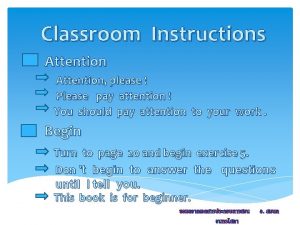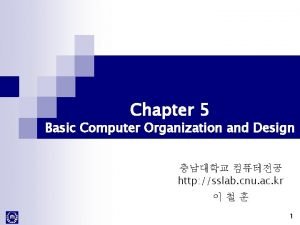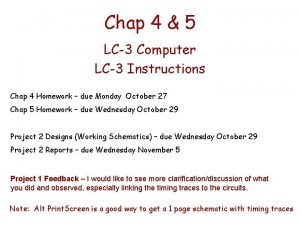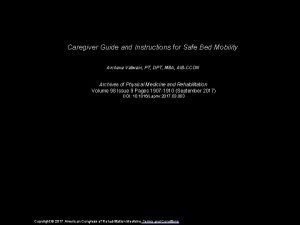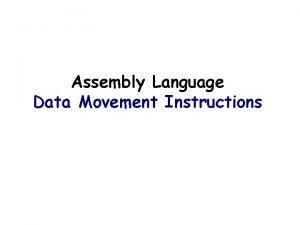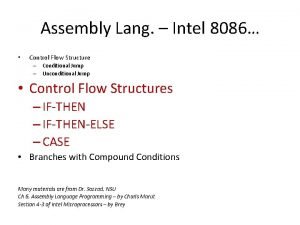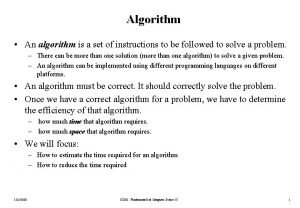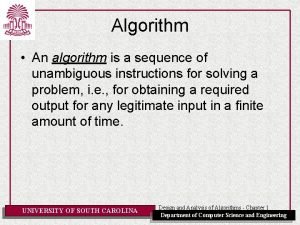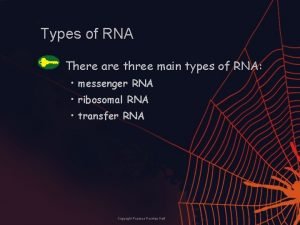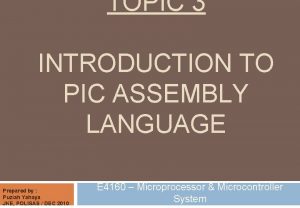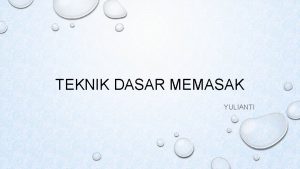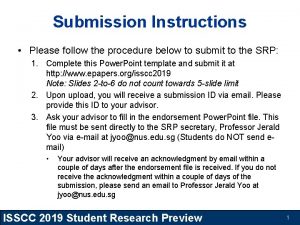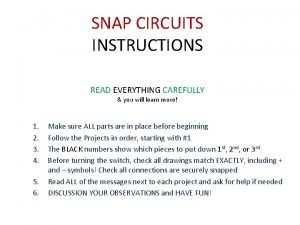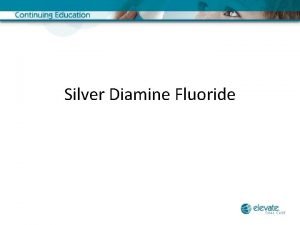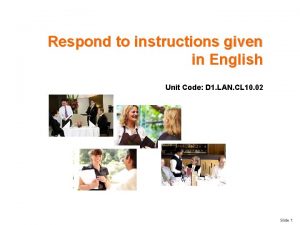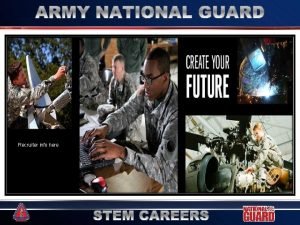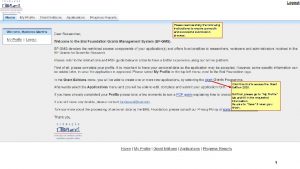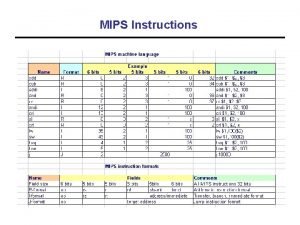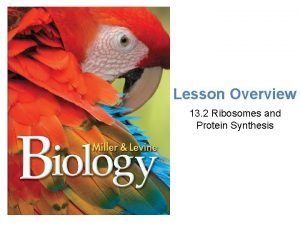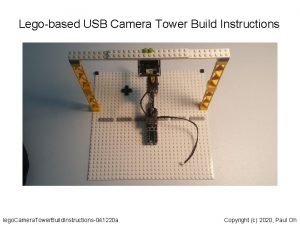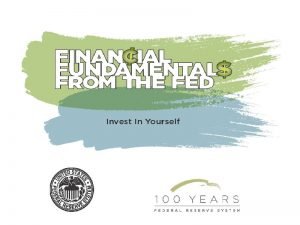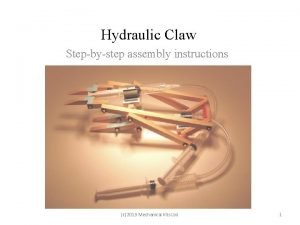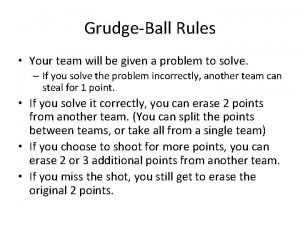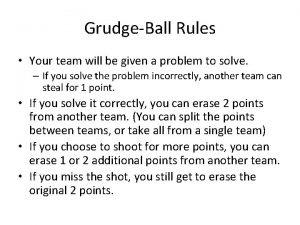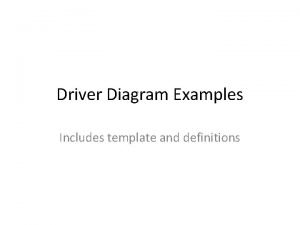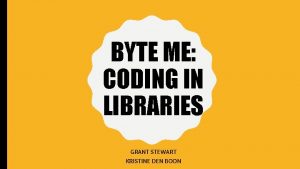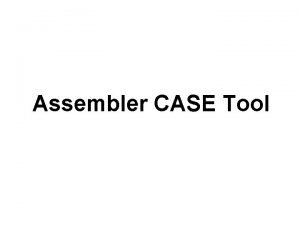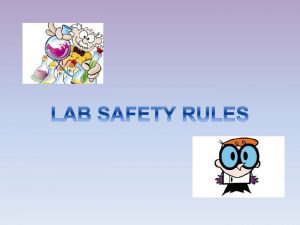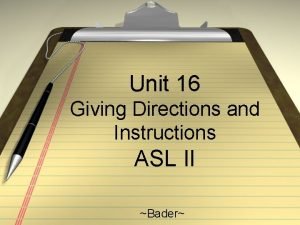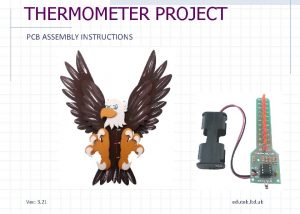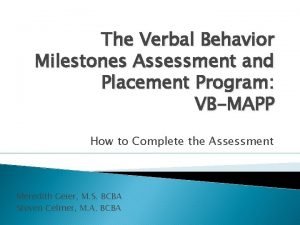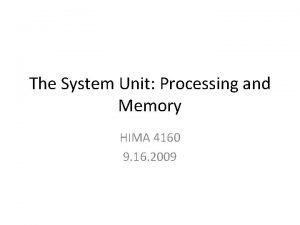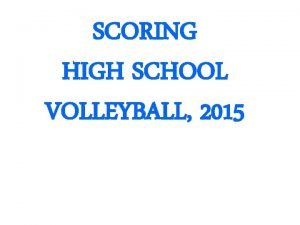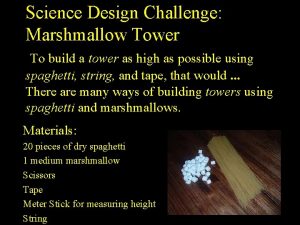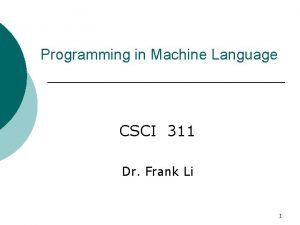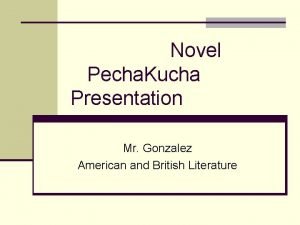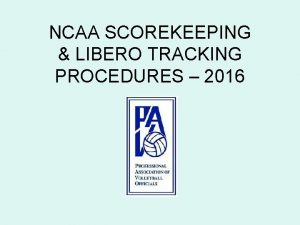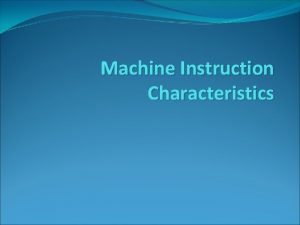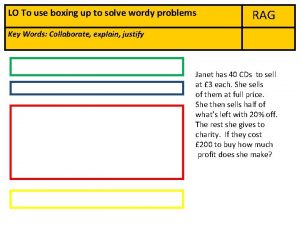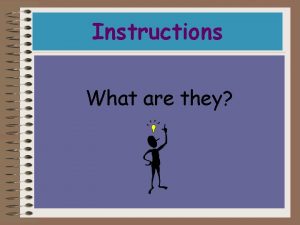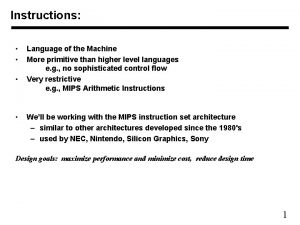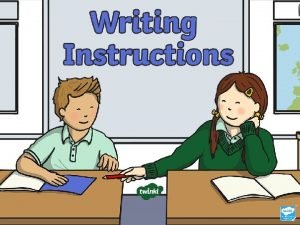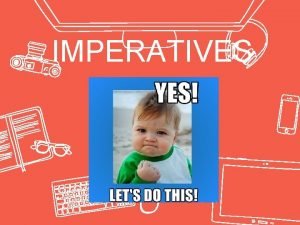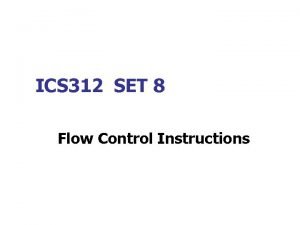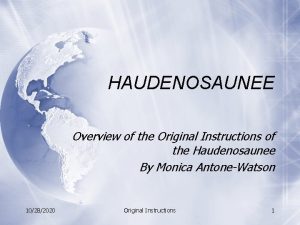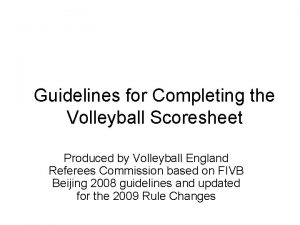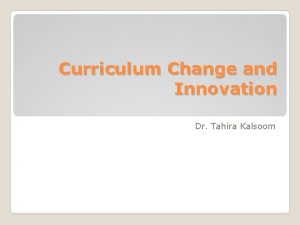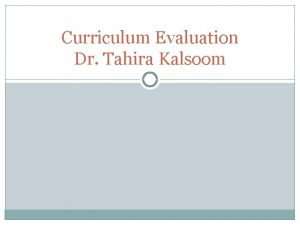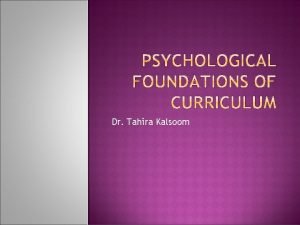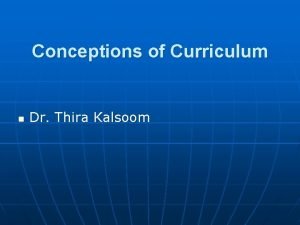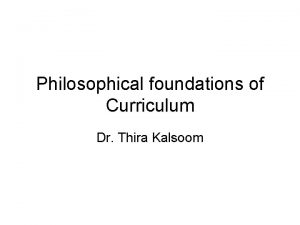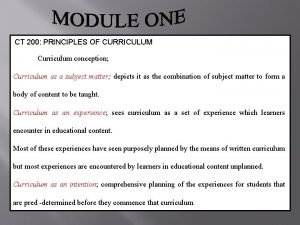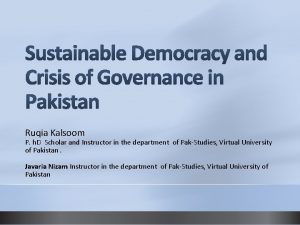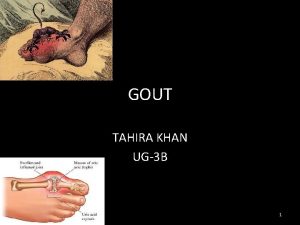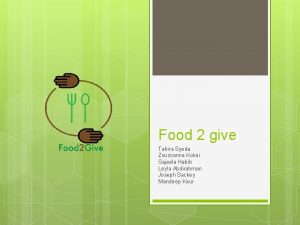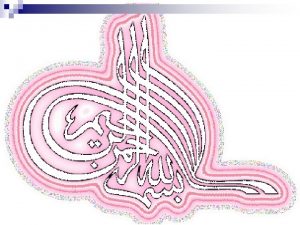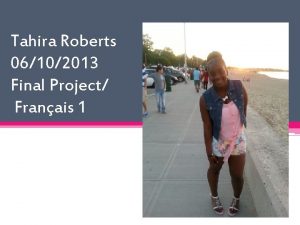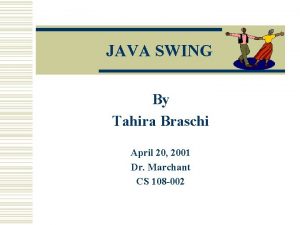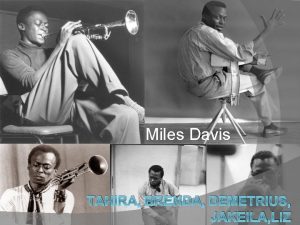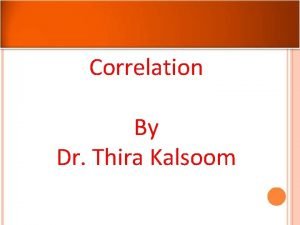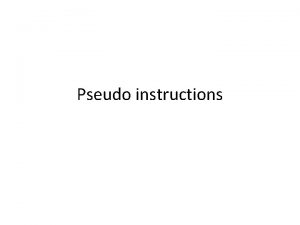Principles of Curriculum and Instructions Dr Tahira Kalsoom
























































































































- Slides: 120

�Principles of Curriculum and Instructions �Dr. Tahira Kalsoom

Basic Principles of Curriculum Development Curriculum is a tool in the hands of the teachers to give training to children in the art of living together in the community. It is a tool, which considerably helps to inculcate those standards of moral action, which are essential for successful living in society and for getting true satisfaction out of life. It is, therefore, very essential that the curriculum should be based on sound principles. The following principles should be kept in mind when framing curriculum:

The Conservative Principle It has been stated that nations live in the present, on the past and for the future. This means that the present, the past and the future needs of the community should be taken into consideration. The past is a great guide for the present as it helps us to decide what has been useful to those, who have gone before and what will be useful to those, who are going through now. This principle will be of help only when we carefully select a to what things of the past are likely to help us in the present. All the things of the past may not suit us. It is, therefore, essential that we should select only those subjects and activities, which are required by the present generation.

The Forward-looking Principle Children of today are the citizens of tomorrow. Therefore, their education should be such as it enables them to be progressive minded persons. Education should give them a foundation of knowledge and feeling that will enable them to change the environment where change is needs.

The Creative Principle In the curriculum those activities should be included, which enable the child to exercise his creative and constructive powers. The objective of education is to discover and to develop special interests, tastes and aptitudes.

The Activity Principle The curriculum should be thought in terms of activity and experience, rather than of knowledge to be acquired and facts to be stored. Growth and learning take place only where there is activity. Experience rather than instruction is to meet the needs of the various stages of growth. Playgrounds shops, workrooms and laboratories not only direct the natural active tendencies of youth, but they also involve intercourse, communication and co-operation.

Principle of Preparation for life This is most important principle in the construction of the curriculum. Education must equip an individual for life. Hence, curriculum must include those activities, which enable the child to take his part effectively and amicably in the activities of the community when he becomes an adult. We have to prepare him in such as way, as he is capable of facing the various challenges of the complex problems of the future.

Child-Centred Curriculum It is true that the child is to be prepared for life. But this does not mean that his immediate interests should be sacrificed for the sake of the future, which is indefinite. The best preparation for life that we can give a child is to help him to live fully and richly his life at that stage at which he is. The child automatically prepares himself for the next stage by living well and true life at one stage.

Principle of Maturity Curriculum should be adapted to the grade of the pupils and to their stage of mental and physical development. In the early childhood, wonder and romance predominate. So subjects and activities, which present the elements of wonder and romance should be included at this stage. At a later stage they are interested in practical things. So at the Elementary Stage the curriculum should provide for practical problem. At the next stage, that is the Secondary Stage, students are interested in generalization and accordingly curriculum should provide such activates. The child at this stage is keen to discover, to find out and discuss new facts. The curriculum should harness the adventurous spirit of the growing child.

Principle of Individual Difference Individuals differ in taste, temperament, skill, experience, aptitude, and innate ability and in sex. Therefore, the curriculum should be adapted to individual differences. It should not be rigid.

Vertical and Horizontal Articulation On the one hand, each year’s course should be built on what has been done in previous years and at the same time should serve as basis for subsequent work. It is absolutely essential that the entire curriculum should be coordinated.

Principle of Linking with life The community needs and characteristics should be kept in view while framing the curriculum.

Principle of Comprehensiveness and Balance The curriculum should be framed in such a way as every aspect of life i. e. economic relationships, social activities, occupations and spiritual life, is given due emphasis.

Principle of Loyalities The curriculum should be planned in such a manner that it teacher a true sense of loyalty to the family, the school, the community, the town, the province, the country and the world at large. It should enable the child to understand that there is unity in diversity.

Flexibility Curriculum should take into consideration the special needs and circumstances of the pupils. Curriculum of the girls may not always be identical with the boys. The special needs of both the sexes should be given their due consideration. In general the curriculum of the village and the urban school with be the same but there might be variation according to the specific needs of the locality.

Principle of Core or Common Subjects There are certain broad areas of knowledge, skill and appreciation with which all the children must be made conversant and these should find a place in the curriculum. This is more important at higher secondary stage where there are diversified courses. These subjects are to be common to all groups. They are known as core subjects. Mother tongue or regional language, special studies (general course), general science including mathematics and one craft are expected to be the core subject.

Principle of Leisure The curriculum should prepare the child for the use of leisure time. According to Herbert Spencer, Literature, Music and Art occupy the leisure part of life and should, therefore, occupy the leisure part of education. The capacity to enjoy leisure greatly determines a man’s capacity to work. If leisure is spent in gambling drinking and reading obscene literature, it will hamper progress not only of an individual but also the nation as a whole. The school curriculum should therefore, prepare the would be citizens to use effectively their leisure time.

Principle of All-round Development of Body, Mind and Spirit: All kinds of experiences should be provided to the students so that they may develop their all powers.

Curriculum Design

Design �the arrangement of the elements of a curriculum into a substantive entity

Elements of Curriculum Design �Aims, Goals, and Objectives �Subject Matter �Learning Experiences �Evaluation Approaches

Sources for Curriculum Design �Science �Society �Eternal and Divine Sources �Knowledge �Learner

Science as a Source �Scientific method provides meaning for the curriculum design �Designs that stress learning how to learn or “thinking” curricula emphasize scientific procedures �Coincides with the scientific and rational world of Western culture

Society as a Source �School is an agent of society, thus the school should draw its ideas for the curriculum from the analysis of the social situation �Curriculum design can only be completely understood if it is contextualized socially, economically, and politically

Eternal and Divine Sources �Draw on the past for guidance as to what is appropriate content �Related to eternal truth revealed through such sources as the Bible or other religious documents

Knowledge as a Source �Disciplined Knowledge �has a particular method or methods by which scholars extend its boundaries �Undisciplined Knowledge �does not have unique content, but has content that is clustered according to the focus of the investigation

The Learner as a Source �Curriculum should be derived from what we know about the learner---how he learns. Forms attitudes, generates interests, and develops values

Conceptual Framework �Horizontal organization �scope and integration � side by side arrangement of curriculum elements �sequence and continuity � longitudinal placement of curriculum elements

Design Dimension Considerations �Scope �Sequence �Continuity �Integration �Articulation �Balance

Scope �breath and depth of curriculum content

Sequence �vertical relationship among curricular areas �the occurrence and reoccurrence of content and experiences so that students will have opportunities to connect and enrich their understanding of the curriculum presented or experienced

Continuity �vertical manipulation or repetition of curriculum components

Integration �linking of all types of knowledge and experiences contained within the curriculum plan �enables the individual to comprehend knowledge as unified

Articulation �Vertical Articulation �depicts the relationships of certain aspects in the curriculum sequence to lessons, topics, or courses appearing later in the program’s sequence �Horizontal Articulation �refers to the association between or among elements occurring simultaneously

Balance �giving appropriate weight to each aspect of the design so that distortions do not occur

Representative Curriculum Designs �Subject-Centered Designs �Learner-Centered Designs �Problem-Centered Designs

Subject-Centered Designs �Subject Design �Discipline Design �Broad Fields Design �Correlation Design �Process Design

Subject Design �Based on the belief that what makes humans unique and distinctive is their intellect and the searching for and attainment of knowledge are the natural fulfillment of that intellect �Curriculum is organized according to how essential knowledge has been developed in the various subject areas

Subject Design-Strengths & Weaknesses Emphasis on verbal activities Introduces students to the essential knowledge of society Easy to deliver Traditional Prevents individualization Disempowers students Fails to foster social, psychological, and physical development Compartmentalizes learning Neglects students’ needs, interests, experiences Fosters passivity

Discipline Design �Based on the inherent organization of content �The manner in which content is learned is suggested by the methods scholars employ to study the content of their fields.

Discipline Design-Strengths & Weaknesses Students attain mastery of content and independent learning Subjects to be taught to any child at any stage of development Ignores information that cannot be classified as disciplined knowledge Addresses only the interests of the college bound Students must adapt to the curriculum

Broad Fields Design (Interdisciplinary) �Attempts to integrate content that appears to fit together logically �Allows students to discern relationships among the various aspects of the curriculum content, as well as wholeness of meaning �Students are invited to participate through the construction of meaning in grasping the meaning or meanings of the whole

Broad Fields- Strengths & Weaknesses Allows students to discern relationships among various aspects of curriculum content Students participate in the construction of meaning Issue of breadth vs depth

Correlation Design �Allows for some linkage of separate subjects in order to reduce fragmentation of the curricular content

Correlation- Strengths & Weaknesses Allows linkage of some subjects to reduce fragmentation Requires alternative forms of scheduling Requires teachers to plan differently (cooperatively)

Process Design �Gives attention to the procedures and processes by which individuals advance knowledge, either in specific disciplines or in general �Emphasizes those procedures and dispositions to act that enable students to analyze their realities and create frameworks by which the knowledge derived can be arranged

Process- Strengths & Weaknesses Teaches how to learn and think critically Lacks emphasis on content

Learner-Centered Designs �Child Centered Designs �Experience-Centered Designs �Romantic (Radical) Designs �Humanistic Designs

Child Centered Designs �Students must be active in their environments if we are to optimize learning �Curriculum should be based on students’ lives, needs, and interests

Child-Centered Strengths & Weaknesses Empowers students through ownership of knowledge Allows for constructivist learning Content not specific

Experience Centered Designs �Everything has to be done “on the spot”---we cannot anticipate the interests and needs of children

Experience Centered Strengths & Weaknesses Based on natural experiences of children Not specific

Romantic (Radical) Designs �Emancipation is the goal of education �Individuals should gain those awarenesses, competencies, and attitudes to enable them to take control of their lives �Learning results from the interaction among people; by challenging content and permitting different views about the content, as well as from critiquing the purposes of the information presented

Romantic Strengths & Weaknesses Emancipates the learner Threatens status quo

Humanistic Designs �The focus of attention should be on the subject nature of human existence; there is a relationship between learning and feeling �Empowering individuals �Stress the development of positive self-concept and interpersonal skills

Humanistic Strengths &Weaknesses Promotes self esteem Empowers individuals Inadequate consideration of methods in light of consequences for learners Inconsistent emphasis on uniqueness of individuals and activities that all students experience Too much emphasis on the needs of the individual over the overall society Does not integrate what is known about human learning and development

Problem-Centered Designs �Life-Situations Design �Core Design �Social problems and Reconstructionist Designs

Life Situation Design � Persistent life situations are crucial to a society’s successful functioning; it makes sense to organize a curriculum around them � Students will see direct relevance to what they are studying if the content is organized around aspects of community life � By having students study social or life situations, they not only study ways to improve society but become directly involved in that improvement

Life Situations Strengths & Weaknesses Presents subject matter in an integrated manner Encourages students to learn and apply problem solving procedures Relevant How to determine scope and sequence of essential areas of learning Does not expose student adequately to their cultural heritage Nontraditional

Core Design �Centers on general education and is based on problems arising out of common human activities

Core Strengths & Weaknesses Unifies content Provides relevant subject matter Encourages active processing of information Fosters democratic processes in the classroom Nontraditional Ignores the fundamentals Materials are hard to find Requires an exceptional teacher

Social Problems and Reconstructionist Design �Curriculum should address contemporary social problems and social action projects aimed at reconstructing society �Educators will effect social change and create a more just society

Curriculum Design

Design �the arrangement of the elements of a curriculum into a substantive entity

Elements of Curriculum Design �Aims, Goals, and Objectives �Subject Matter �Learning Experiences �Evaluation Approaches

Sources for Curriculum Design �Science �Society �Eternal and Divine Sources �Knowledge �Learner

Science as a Source �Scientific method provides meaning for the curriculum design �Designs that stress learning how to learn or “thinking” curricula emphasize scientific procedures �Coincides with the scientific and rational world of Western culture

Society as a Source �School is an agent of society, thus the school should draw its ideas for the curriculum from the analysis of the social situation �Curriculum design can only be completely understood if it is contextualized socially, economically, and politically

Eternal and Divine Sources �Draw on the past for guidance as to what is appropriate content �Related to eternal truth revealed through such sources as the Bible or other religious documents

Knowledge as a Source �Disciplined Knowledge �has a particular method or methods by which scholars extend its boundaries �Undisciplined Knowledge �does not have unique content, but has content that is clustered according to the focus of the investigation

The Learner as a Source �Curriculum should be derived from what we know about the learner---how he learns. Forms attitudes, generates interests, and develops values

Conceptual Framework �Horizontal organization �scope and integration � side by side arrangement of curriculum elements �sequence and continuity � longitudinal placement of curriculum elements

Design Dimension Considerations �Scope �Sequence �Continuity �Integration �Articulation �Balance

Scope �breath and depth of curriculum content

Sequence �vertical relationship among curricular areas �the occurrence and reoccurrence of content and experiences so that students will have opportunities to connect and enrich their understanding of the curriculum presented or experienced

Continuity �vertical manipulation or repetition of curriculum components

Integration �linking of all types of knowledge and experiences contained within the curriculum plan �enables the individual to comprehend knowledge as unified

Articulation �Vertical Articulation �depicts the relationships of certain aspects in the curriculum sequence to lessons, topics, or courses appearing later in the program’s sequence �Horizontal Articulation �refers to the association between or among elements occurring simultaneously

Balance �giving appropriate weight to each aspect of the design so that distortions do not occur

Representative Curriculum Designs �Subject-Centered Designs �Learner-Centered Designs �Problem-Centered Designs

Subject-Centered Designs �Subject Design �Discipline Design �Broad Fields Design �Correlation Design �Process Design

Subject Design �Based on the belief that what makes humans unique and distinctive is their intellect and the searching for and attainment of knowledge are the natural fulfillment of that intellect �Curriculum is organized according to how essential knowledge has been developed in the various subject areas

Subject Design-Strengths & Weaknesses Emphasis on verbal activities Introduces students to the essential knowledge of society Easy to deliver Traditional Prevents individualization Disempowers students Fails to foster social, psychological, and physical development Compartmentalizes learning Neglects students’ needs, interests, experiences Fosters passivity

Discipline Design �Based on the inherent organization of content �The manner in which content is learned is suggested by the methods scholars employ to study the content of their fields.

Discipline Design-Strengths & Weaknesses Students attain mastery of content and independent learning Subjects to be taught to any child at any stage of development Ignores information that cannot be classified as disciplined knowledge Addresses only the interests of the college bound Students must adapt to the curriculum

Broad Fields Design (Interdisciplinary) �Attempts to integrate content that appears to fit together logically �Allows students to discern relationships among the various aspects of the curriculum content, as well as wholeness of meaning �Students are invited to participate through the construction of meaning in grasping the meaning or meanings of the whole

Broad Fields- Strengths & Weaknesses Allows students to discern relationships among various aspects of curriculum content Students participate in the construction of meaning Issue of breadth vs depth

Correlation Design �Allows for some linkage of separate subjects in order to reduce fragmentation of the curricular content

Correlation- Strengths & Weaknesses Allows linkage of some subjects to reduce fragmentation Requires alternative forms of scheduling Requires teachers to plan differently (cooperatively)

Process Design �Gives attention to the procedures and processes by which individuals advance knowledge, either in specific disciplines or in general �Emphasizes those procedures and dispositions to act that enable students to analyze their realities and create frameworks by which the knowledge derived can be arranged

Process- Strengths & Weaknesses Teaches how to learn and think critically Lacks emphasis on content

Learner-Centered Designs �Child Centered Designs �Experience-Centered Designs �Romantic (Radical) Designs �Humanistic Designs

Child Centered Designs �Students must be active in their environments if we are to optimize learning �Curriculum should be based on students’ lives, needs, and interests

Child-Centered Strengths & Weaknesses Empowers students through ownership of knowledge Allows for constructivist learning Content not specific

Experience Centered Designs �Everything has to be done “on the spot”---we cannot anticipate the interests and needs of children

Experience Centered Strengths & Weaknesses Based on natural experiences of children Not specific

Romantic (Radical) Designs �Emancipation is the goal of education �Individuals should gain those awarenesses, competencies, and attitudes to enable them to take control of their lives �Learning results from the interaction among people; by challenging content and permitting different views about the content, as well as from critiquing the purposes of the information presented

Romantic Strengths & Weaknesses Emancipates the learner Threatens status quo

Humanistic Designs �The focus of attention should be on the subject nature of human existence; there is a relationship between learning and feeling �Empowering individuals �Stress the development of positive self-concept and interpersonal skills

Humanistic Strengths &Weaknesses Promotes self esteem Empowers individuals Inadequate consideration of methods in light of consequences for learners Inconsistent emphasis on uniqueness of individuals and activities that all students experience Too much emphasis on the needs of the individual over the overall society Does not integrate what is known about human learning and development

Problem-Centered Designs �Life-Situations Design �Core Design �Social problems and Reconstructionist Designs

Life Situation Design � Persistent life situations are crucial to a society’s successful functioning; it makes sense to organize a curriculum around them � Students will see direct relevance to what they are studying if the content is organized around aspects of community life � By having students study social or life situations, they not only study ways to improve society but become directly involved in that improvement

Life Situations Strengths & Weaknesses Presents subject matter in an integrated manner Encourages students to learn and apply problem solving procedures Relevant How to determine scope and sequence of essential areas of learning Does not expose student adequately to their cultural heritage Nontraditional

Core Design �Centers on general education and is based on problems arising out of common human activities

Core Strengths & Weaknesses Unifies content Provides relevant subject matter Encourages active processing of information Fosters democratic processes in the classroom Nontraditional Ignores the fundamentals Materials are hard to find Requires an exceptional teacher

Social Problems and Reconstructionist Design �Curriculum should address contemporary social problems and social action projects aimed at reconstructing society �Educators will effect social change and create a more just society

Curriculum Development Process in Pakistan

Introduction � Education plays a vital role in nation building. � Federal Ministry of Education is responsible for the national cohesion, integration and preservation of the ideological foundation of the states. curriculum development process in Pakistan

Responsibilities Federal Ministry of Education is responsible in making of: 1. 2. 3. 4. 5. Curriculum Syllabus Planning Policy Education standards. curriculum development process in Pakistan

Curriculum Design and Development Process curriculum development process in Pakistan

Curriculum Development Process in Pakistan Federal curriculum wing Provincial bureau of curriculum Formation of provincial curriculum Preparation of preliminary draft Federal curriculum wing Formation of national curriculum committee National curriculum draft

National Curriculum draft Provisional bureau of curriculum Boards of other agencies Federal curriculum wing NATIONAL CURRICULA Provincial bureau of curriculum Board of intermediate and secondary Provisional textbook board Publication of textbook

Developing Objectives are derived from � Recommendation of the National Education Policy � National Level Seminars � Forums of research studies � Inter Board Committee of Chairmen curriculum development process in Pakistan

Curriculum Development at Higher Education Level curriculum development at higher education level

Introduction � In 1973’s constitution, Government placed education on the concurrent list. � Federal Government took the responsibility to determine the curriculum text boards, policy, planning and standards of education. curriculum developmente higher education level

Higher Education Commission �� In December, 1976 Federal Government appointed University Grant commission (now HEC ) as the competent authority to look after the curriculum revision work at bachelor level and onwards �� It also look after the degrees, certificates and diplomas awarded by degree colleges, universities and other institutions of HEC. curriculum development at higher education level

Procedure to Review/ Revise Curriculum �� In 45 th meeting of Vice-Chancellor’s Committee it’s recommended that the UGC should review the curriculum of a particular discipline after every three years. curriculum development at higher education level

Procedure to Review/ Revise Curriculum � HEC adopted a procedure to review/ revise curriculum � In ensure the quality of the updated curricula. curriculum development at higher education level

Implementation • The curricula designed is printed and sent to universities/institutions for its adoption/implementation after the approval of the Competent Authority. curriculum development at higher education level

curriculum development process in Paksitan
 Tahira rehman
Tahira rehman Transcription inhibitors
Transcription inhibitors Difference between syllabus and curriculum
Difference between syllabus and curriculum Secondary education commission 1952 to 1953
Secondary education commission 1952 to 1953 Defination of curriculum
Defination of curriculum Chutes and ladders instructions
Chutes and ladders instructions Sit and reach instructions
Sit and reach instructions Where a computer keeps data, instructions, and information
Where a computer keeps data, instructions, and information Simplicity favours regularity
Simplicity favours regularity What are machine control instructions
What are machine control instructions Branch and jump instructions
Branch and jump instructions What is assembly language in computer
What is assembly language in computer Template editing instructions and feedback
Template editing instructions and feedback Conditional jump instructions in 8086
Conditional jump instructions in 8086 Je in assembly language
Je in assembly language Aorn standards for surgical skin prep
Aorn standards for surgical skin prep What is the difference between adca and adda instructions
What is the difference between adca and adda instructions Microprogram sequencer
Microprogram sequencer Difference between shift and rotate instructions
Difference between shift and rotate instructions Memory chips storing permanent data and instructions
Memory chips storing permanent data and instructions Blank lie
Blank lie Nnnqq
Nnnqq Rob fisher cause of death
Rob fisher cause of death Picture puzzle instructions
Picture puzzle instructions Pay attention the teacher's instructions
Pay attention the teacher's instructions Idexx upc instructions
Idexx upc instructions Understanding standards nat 5 pe
Understanding standards nat 5 pe Hemosure ifob test directions
Hemosure ifob test directions Sue palmer instructions
Sue palmer instructions Hogs beans
Hogs beans Explain cmp instruction in 8086
Explain cmp instruction in 8086 Lego sorting machine instructions
Lego sorting machine instructions Stand up hand up pair up clipart
Stand up hand up pair up clipart How to prepare a storyboard
How to prepare a storyboard Software is a set of instructions
Software is a set of instructions Pltw skimmer
Pltw skimmer Phrasing on reported speech (1) answers
Phrasing on reported speech (1) answers Origami dome instructions
Origami dome instructions Pseudo instructions examples
Pseudo instructions examples Li pseudo instruction
Li pseudo instruction Data manipulation instructions enable the plc to
Data manipulation instructions enable the plc to System control instructions
System control instructions Mul in mips
Mul in mips Spim tutorial
Spim tutorial Marie rtl
Marie rtl Spectrum net easywifi
Spectrum net easywifi 5988 example
5988 example Pseudo instructions examples
Pseudo instructions examples Kagan rally coach instructions
Kagan rally coach instructions Intel simd instruction set
Intel simd instruction set Ror instruction in 8086
Ror instruction in 8086 Sim instruction in 8085
Sim instruction in 8085 Tug test instructions
Tug test instructions Work instruction management system
Work instruction management system What is grudge ball
What is grudge ball Gps lockbox
Gps lockbox One set of instructions for an inherited trait
One set of instructions for an inherited trait Identify whether each statement is true or false
Identify whether each statement is true or false Europass cv instructions
Europass cv instructions Les instructions de la classe
Les instructions de la classe This lesson is important. please pay
This lesson is important. please pay Thora seal 3
Thora seal 3 Accumulator logic in computer architecture
Accumulator logic in computer architecture Lc-3 instructions
Lc-3 instructions Bed mobility instructions
Bed mobility instructions Design of basic computer
Design of basic computer Mov in assembly
Mov in assembly While loop in assembly language 8086
While loop in assembly language 8086 Two way communication system for area of refuge
Two way communication system for area of refuge An algorithm is a set of instructions
An algorithm is a set of instructions Unambiguous algorithm meaning
Unambiguous algorithm meaning Dutrion
Dutrion Carries copies of the instructions for assembling proteins
Carries copies of the instructions for assembling proteins Pic assembly language
Pic assembly language Froet roof drain installation instructions
Froet roof drain installation instructions Memasak bahan makanan dalam minyak banyak adalah teknik
Memasak bahan makanan dalam minyak banyak adalah teknik Avagard surgical scrub instructions
Avagard surgical scrub instructions Please follow the instructions below
Please follow the instructions below Paralell circuit
Paralell circuit Sdf advantage arrest
Sdf advantage arrest Responding to instructions
Responding to instructions Meaning of remedial teaching
Meaning of remedial teaching Mre heater instructions
Mre heater instructions Please read instructions carefully before use
Please read instructions carefully before use Pericalm instructions
Pericalm instructions Alu instructions
Alu instructions What role does the ribosome play in assembling proteins?
What role does the ribosome play in assembling proteins? Lego camera instructions
Lego camera instructions How to make a name tent
How to make a name tent Privileged instructions
Privileged instructions Hydraulic claw kit
Hydraulic claw kit Grudge ball rules
Grudge ball rules Grudge ball instructions
Grudge ball instructions Enzyme foldable answers key
Enzyme foldable answers key Driver diagram stroke
Driver diagram stroke Dermalogica multivitamin power exfoliant protocol
Dermalogica multivitamin power exfoliant protocol Byteme instructions
Byteme instructions Basic computer instructions
Basic computer instructions Ahsaa volleyball scores
Ahsaa volleyball scores Follow your teacher's instructions
Follow your teacher's instructions Giving directions in asl
Giving directions in asl Pcb assembly instructions
Pcb assembly instructions Verbal behavior milestones assessment and placement program
Verbal behavior milestones assessment and placement program Cpu instructions
Cpu instructions High school volleyball score sheet
High school volleyball score sheet Marshmallow challenge materials
Marshmallow challenge materials Frank programming language
Frank programming language Pecha kucha instructions
Pecha kucha instructions Khsaa volleyball scorekeeping
Khsaa volleyball scorekeeping Ncaa volleyball score sheets
Ncaa volleyball score sheets Nfpweb
Nfpweb What are machine instructions
What are machine instructions Boxing up instructions
Boxing up instructions What are instructions?
What are instructions? Primitive instructions
Primitive instructions Instructional text grade 5
Instructional text grade 5 Imperatives
Imperatives Flow control instructions in assembly language
Flow control instructions in assembly language The original instructions
The original instructions Wiaa volleyball score sheet instructions
Wiaa volleyball score sheet instructions Gallery walk technique
Gallery walk technique

